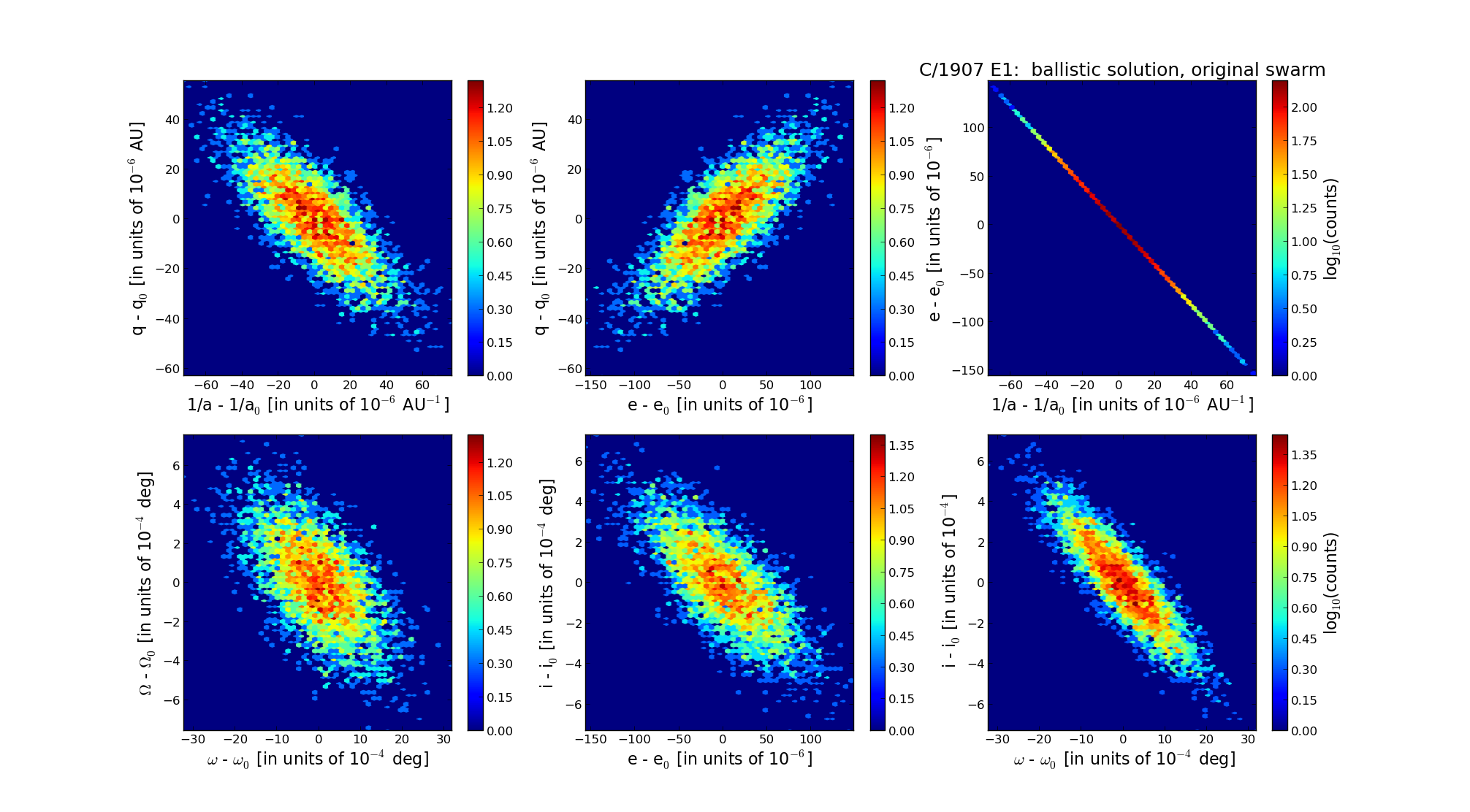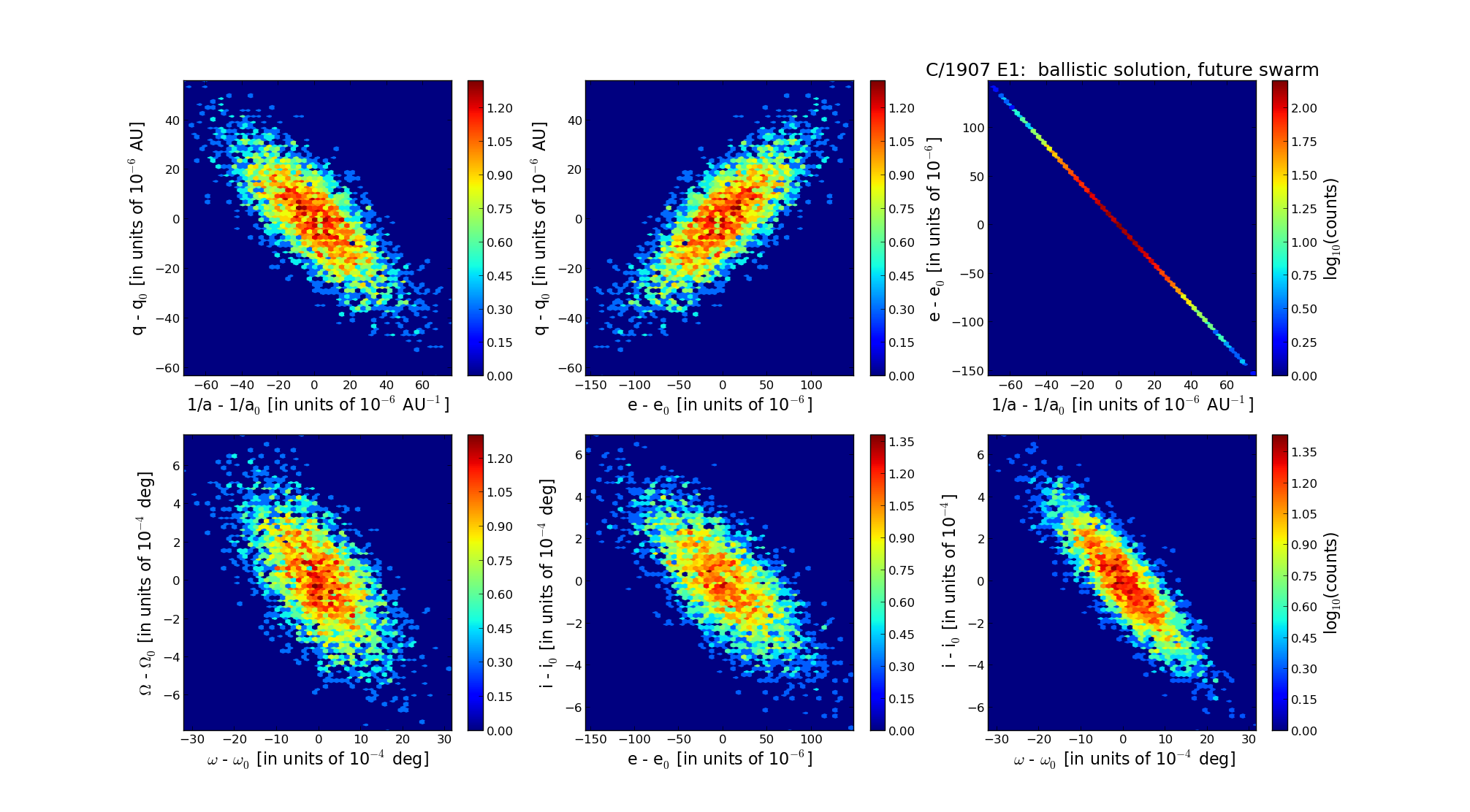| Solar System Dynamics & Planetology Group |
 |
C/1907 E1 Giacobini |  |
| Solar System Dynamics & Planetology Group |
 |
C/1907 E1 Giacobini |  |
| number of observations | 178 |
| number of residuals | 296 |
| data interval | 1907 Mar. 9 — 1908 Feb. 26 |
| rms [arcsec] | 2.56 |
| orbit quality class | 2a |
| Epoch (TT) | 19070309.0 | = JD 2417643.5 |
| time of perihelion passage (TT) | 19070319.606941 | ± 0.001690 |
| perihelion distance | 2.05167901 | ± 0.00001611 |
| eccentricity | 1.00099244 | ± 0.00004395 |
| argument of perihelion [deg] | 317.118563 | ± 0.000810 |
| longitude of the ascending node [deg] | 98.484125 | ± 0.000214 |
| inclination [deg] | 141.659654 | ± 0.000193 |
| inverse semimajor axis [10-6 au-1] | -483.72 | ± 21.42 |

| Epoch (TT) | 16061012 | |
| time of perihelion passage (TT) | 19070320.532327 | ± 0.001521 |
| perihelion distance | 2.05146625 | ± 0.00001620 |
| eccentricity | 0.99993073 | ± 0.00004423 |
| argument of perihelion [deg] | 317.181114 | ± 0.000820 |
| longitude of the ascending node [deg] | 98.439032 | ± 0.000215 |
| inclination [deg] | 141.685157 | ± 0.000201 |
| inverse semimajor axis [10-6 au-1] | 33.76 | ± 21.56 |

| Epoch (TT) | 22040131 | |
| time of perihelion passage (TT) | 19070320.176742 | ± 0.001723 |
| perihelion distance | 2.04521487 | ± 0.00001628 |
| eccentricity | 1.00057480 | ± 0.00004408 |
| argument of perihelion [deg] | 317.069049 | ± 0.000814 |
| longitude of the ascending node [deg] | 98.573559 | ± 0.000221 |
| inclination [deg] | 141.673192 | ± 0.000193 |
| inverse semimajor axis [10-6 au-1] | -281.04 | ± 21.55 |